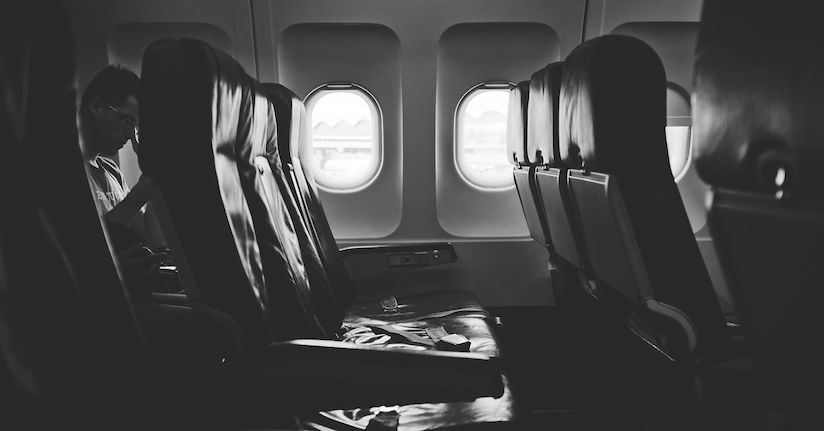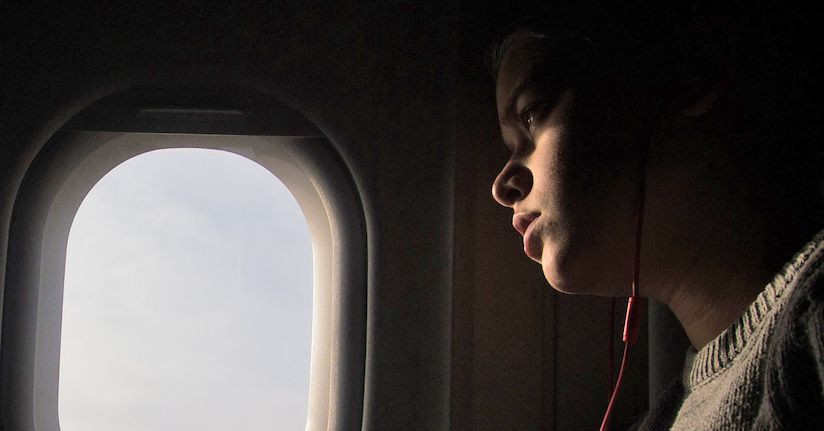10 Useful Tips to Manage Migraines and Headaches While Flying
There is nothing worse than being stuck on a plane when a migraine attack hits. You know full well that there is nowhere to go until the plane lands. Worse, when you reach your destination, you need to be functional—not wandering around in a haze of pain with a brain fog that you are unable to shake. In this post, we offer several strategies you can use to help reduce your migraine symptoms and headaches before, during and after your flight.
Pack your medication
This is hugely important. Make sure you have all the appropriate medication packed not just for your migraine but for any other health-related needs. And you should include the medicine you may require during the flight in your carry-on luggage. This may include anti-nausea medication if in-flight turbulence is problematic for you as well as acute migraine drugs that can help stall an attack should one develop.
Try a neck pillow
They may not be the most comfortable, but neck pillows sure beat the stiff seat backs and head rests of most economy flights. They will offer support that can allow you to lean back, relax, and get some rest—and most importantly, keep you from developing neck pain or joint stiffness, which might bring on an attack. Investing in a good travel pillow (between $10 to $30 on Amazon or in many airport gift shops) before your trip is a wise choice.
Wear precision-tinted glasses

Just imagine the brightness coming through the airplane window during a sunset flight and hitting you right in the eye—it does not sound like too much fun, does it? Thankfully, you can use precision-tinted TheraSpecs to help reduce the odds that the bright lights on the plane will trigger a migraine attack. (And they are also great for lighting everywhere else too—offices, grocery stores, etc.)
Turn off the overhead lights or have a sleep mask
You might not be able to control what your seatmates do, but you can turn off your own overhead lights to help reduce that potential trigger. Sympathetic passengers may also be willing to turn off their lights if you approach them nicely. As a last resort, you can find affordable sleep masks for $5 to $20 that can keep all the light out.
Manage scent triggers and bring your own snacks
If certain smells bring about migraines, you may want to consider adding nose plugs or a face mask to your carry-on bag, especially if you are around really strong odors. Tammy Rome at migraine.com found that dabbing a little Vicks under her nose would dull known scent triggers because, in her particular case, she was able to handle the smell of menthol. In addition, you should also plan to bring your own snacks as well. This will not only keep you from going hungry on a long flight, but it will also allow you to manage any specific food sensitivities.
Have your headphones

From the noise of the engines to shrieking children who are not happy about being on the airplane, there are plenty of noises that can bring on the head pain. Wearing headphones (preferably noise cancelling) or earplugs will help block out the sound and hopefully enable you to enjoy a more peaceful flight.
Drink lots of water
An oldie but a goodie. Staying well hydrated can help decrease the odds that you might end up with a migraine, given the penchant for dehydration to be a prominent trigger. This is especially important when you're flying, since cabin air is often very dry.
Relieve your ear pressure
Ear pressure can feel like a vice squeezing the rest of your head—which may quickly turn into a full-blown headache or migraine attack. If you start to notice this pressure building, you can try some of these strategies:
- Take an antihistamine if needed before your flight. This will reduce mucus and help prevent pressure from building.
- Yawn or swallow during takeoff.
- Try chewing a piece of gum or candy during takeoff, if yawning and swallowing don't work for you.
- Pinch your nose and keep your lips closed, then blow gently. This may pop your ears and relieve pressure.
Choose your seat carefully

When you book your flight, try to anticipate your needs. For instance, sitting by the window means that you are in a position to close the shade and block outdoor light from disrupting your travel experience. There may also be an advantage to having an aisle seat or being located in a particular section of the plane (e.g. a section nearer to the restrooms). Ultimately, know your comfort zone, and don’t be afraid to ask the flight attendants and/or your seatmates if they would be willing to accommodate.
Decrease travel stress
Do you know that stress can be a primary trigger for migraines? Do what you can to reduce stress ahead of time. This might include:
- Bringing most of your baggage with you, rather than checking it.
- Leaving plenty of time at the airport to catch connections instead of needing to run—even if flights are delayed.
- Wearing loose, comfortable clothing as well as minimizing jewelry and other accessories that may need to be removed at security.
- Making your travel plans well in advance and checking the details before you head out.
- Writing down any important details so that you won't lose them.
- Arranging your transportation in advance, either too or from the airport.
While you may not be able to completely eliminate the chances of a migraine attack while flying, you can reduce the odds considerably—not to mention manage your symptoms if they do manifest. These actionable steps will allow you to experience smoother travel in spite of your migraines.
Tell us what has worked for you in the comments below. We would love to include your suggestions on future versions of this article!
TheraSpecs Glasses for Light Management
Try our light-filtering glasses and stay protected against harsh light from screens, fluorescents, LEDs, unwanted blue light, bright sunlight, flashing lights, and more.





